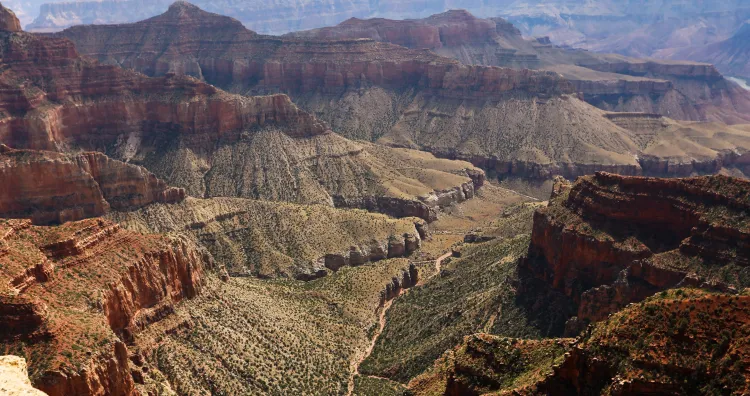Why Are Parts of the Grand Canyon Closed Due to Wildfires?

Synopsis
Key Takeaways
- Parts of the Grand Canyon National Park are closed due to wildfires.
- The White Sage Fire has consumed over 19,000 acres.
- Approximately 500 visitors were evacuated for safety.
- Air quality may fluctuate based on fire behavior.
- Both fires remain at zero percent containment.
Los Angeles, July 13 (NationPress) Portions of the Grand Canyon National Park, a renowned natural marvel in the western United States, are currently closed due to the escalation of two nearby wildfires. These fires have necessitated the evacuation of hundreds of visitors, as reported by officials.
The North Rim of the park is shuttered until further notice to aid firefighting efforts and to ensure the safety of the public amid the Dragon Bravo Fire and the adjacent White Sage Fire, according to a statement released by park officials on Saturday.
Officials also noted that smoke will likely remain visible from the South Rim, with air quality fluctuating based on the behavior of the fires and wind conditions.
The White Sage Fire, which ignited on Wednesday evening after a thunderstorm swept through the region, has expanded to over 19,000 acres (76.9 square km) and is currently at zero percent containment as of Saturday morning, according to InciWeb, an interagency information management system provided by the United States Forest Service.
Significant fire growth has been recorded and is expected to persist, as indicated by an update on the website.
On Friday, officials announced on Facebook that Grand Canyon staff successfully evacuated approximately 500 visitors from the North Rim due to the White Sage Fire. They confirmed that "all visitors have exited the area, while park employees and residents are sheltering in place."
Meanwhile, the nearby Dragon Bravo Fire, which started on July 4, has seen increased fire behavior and growth in recent days, driven by hot, dry, and windy weather conditions, as reported by Xinhua news agency, referencing InciWeb.
This fire has consumed about 5,000 acres (20.2 square km) to date and remains at zero percent containment.










